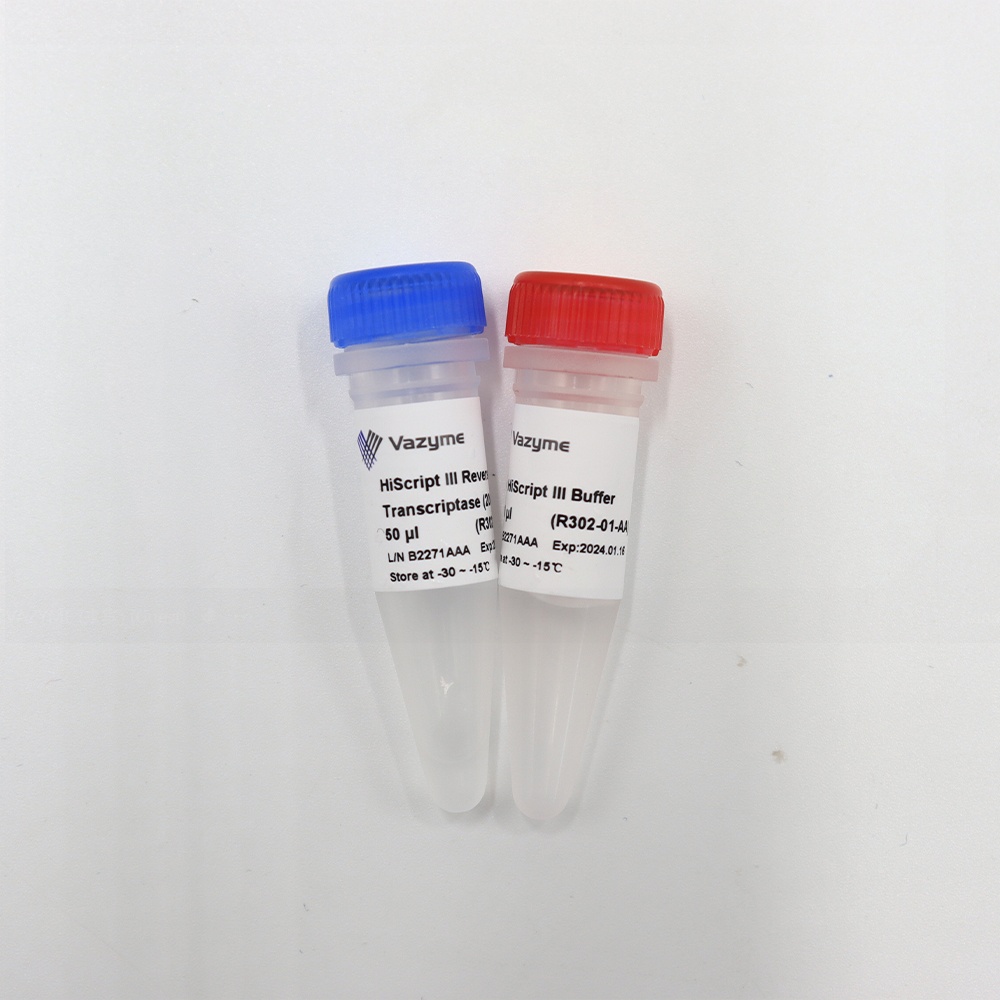HiScript II Reverse Transcriptase
is an enzyme commonly used in molecular biology and biotechnology applications. It is an optimized version of the original HiScript Reverse Transcriptase, designed to provide efficient and reliable reverse transcription of RNA molecules into complementary DNA (cDNA).
Reverse transcription is a process where RNA is converted into cDNA using an enzyme called reverse transcriptase. This enzyme synthesizes a complementary DNA strand based on an RNA template. HiScript II Reverse Transcriptase is a highly efficient and thermostable enzyme that exhibits enhanced activity, specificity, and robustness compared to its predecessor.
Some key features and advantages of HiScript II Reverse Transcriptase include:
- High Efficiency: HiScript II Reverse Transcriptase offers high sensitivity and strong reverse transcription capability, allowing efficient conversion of RNA to cDNA.
- Wide Dynamic Range: It can handle a broad range of RNA concentrations, making it suitable for various applications, including both low and high abundance RNA samples.
- Thermostability: HiScript II Reverse Transcriptase is stable at elevated temperatures, allowing it to withstand higher reaction temperatures and reduce the risk of RNA degradation.
- Enhanced Sensitivity: The enzyme exhibits improved sensitivity to low copy RNA targets, enabling reliable detection and quantification of rare transcripts.
- Broad Compatibility: HiScript II Reverse Transcriptase is compatible with various RNA templates, including total RNA, mRNA, and viral RNA.
- Reduced RNase H Activity: The enzyme exhibits reduced RNase H activity, minimizing degradation of RNA during the reverse transcription process.
- Convenience: HiScript II Reverse Transcriptase is easy to use and compatible with standard reverse transcription protocols. It is commonly available as a ready-to-use enzyme mix, simplifying experimental setup.
HiScript II Reverse Transcriptase is frequently employed in various molecular biology applications, such as gene expression analysis, cDNA library construction, cloning, and real-time quantitative PCR (qPCR). Its improved performance characteristics make it a valuable tool for researchers studying gene expression, transcriptomics, and other RNA-related studies.
Overview of Reverse Transcription


